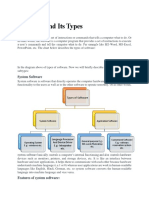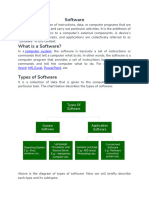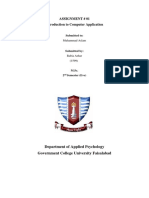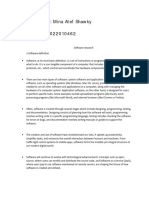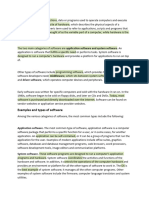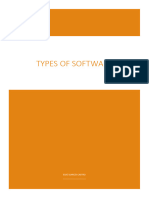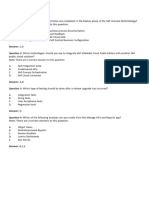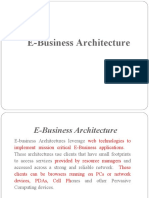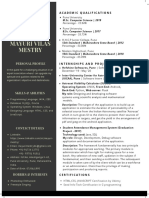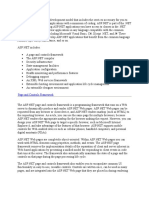0% found this document useful (0 votes)
66 views2 pagesResearch Paper On Types of Software
The document classifies software into two main categories: system software, which manages hardware resources and includes operating systems and device drivers, and application software, which serves end users with specific tasks like word processing and communication. Each type has distinct characteristics, with system software focusing on efficiency and resource management, while application software emphasizes user-friendliness and task-specific functionality. The practical applications of these software types are widespread, impacting personal computing, design, and global communication.
Uploaded by
ayyoob.ahamed.5dCopyright
© © All Rights Reserved
We take content rights seriously. If you suspect this is your content, claim it here.
Available Formats
Download as DOCX, PDF, TXT or read online on Scribd
0% found this document useful (0 votes)
66 views2 pagesResearch Paper On Types of Software
The document classifies software into two main categories: system software, which manages hardware resources and includes operating systems and device drivers, and application software, which serves end users with specific tasks like word processing and communication. Each type has distinct characteristics, with system software focusing on efficiency and resource management, while application software emphasizes user-friendliness and task-specific functionality. The practical applications of these software types are widespread, impacting personal computing, design, and global communication.
Uploaded by
ayyoob.ahamed.5dCopyright
© © All Rights Reserved
We take content rights seriously. If you suspect this is your content, claim it here.
Available Formats
Download as DOCX, PDF, TXT or read online on Scribd
/ 2












